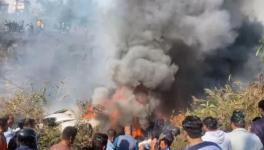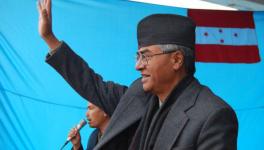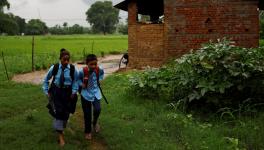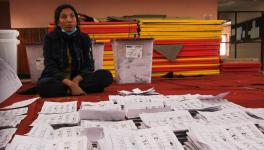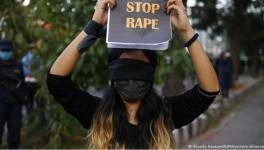Nepal’s Unfinished Business After the People’s War
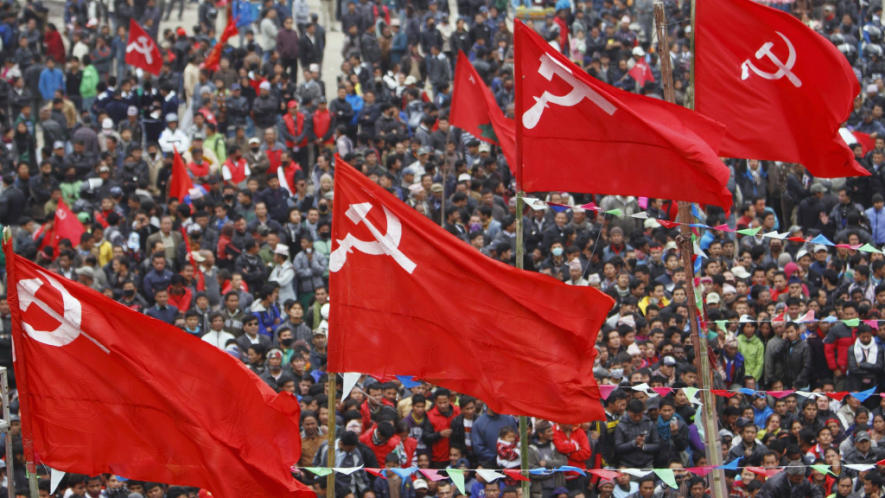
Image for representational purpose only. Image courtesy: Reuters
Despite the grand declaration of the two largest Communist parties in Nepal merging to form the Communist Party of Nepal (CPN) in February 2018, the unification of the left forces is still an unfinished business. Of late, the Netra Bikram Chand (Biplav) faction of the Communist Party of Nepal (Maoist) has threatened to pick up the People’s War from where it was stopped in November 2006 after Pushpa Kamal Dahal (Prachanda) signed the Comprehensive Peace Accord. What makes the situation particularly dicey is that several members of the mainstream party are sympathetic to their Comrade in arms.
Further, the slow progress on the promises of destroying feudalism, casteism and other ills that have plagued Nepali society has also played a role in ensuring the Biplav faction’s limited popularity. The faction has been banned by the Home Minister, Ram Bahadur Thapa (Badal), the other person who along with Biplav had directed the People’s War under Prachanda. However, the government of Nepal was quick to clarify that only the activities of the faction were banned – the blasts and extortion – the party by itself is not. Additionally, the government is in talks with senior functionaries in the faction to bring them to the ‘mainstream’, which may be interpreted as merging the faction within the unification exercise.
Following the end of the People’s War, Prachanda’s Maoist party won a sizeable mandate in the ensuing elections. The party then went on to abolish the monarchy and establish Nepal as a secular republic. However, in the interim period – before a republican Constitution was drawn up – the Maoist Centre experienced several splits. In 2012, Mohan Baidya (Kiran) split from the main party to form the Communist Party of Nepal Revolutionary Maoist. He rejected parliamentary democracy as being bourgeoisie. Biplav split from the main party in 2014 for similar reasons. His faction has accused the main party of adopting ‘class reconciliation’ rather than ‘class struggle’. In 2015, Baburam Bhattarai, a former Prime Minister and long time member of the Maoist Party announced that he had severed all ties with the United Communist Party of Nepal (Maoist). He took this step based on his perception that old political forces cannot transform Nepal. The next year he formed the Naya Shakti Nepal party.
Also Read | Nepal’s Communist Party Merger and Steps Ahead
Though Bhattarai later formed the Naya Shakti Nepal party, the Kiran and Biplav factions of the Maoist Centre took a more hardline stand. However, unlike the Biplav faction, Kiran’s faction has adopted peaceful politics. What remains a sore point for many among the minorities in Nepal is the perceived domination of the political sphere by the upper caste Pahadey men. A good chunk of the support came from the minority groups. Rolpa, the spark that lit the People’s War, is predominantly a Mangar area. Similarly, the Tharu people in the plains also put their faith in the Maoist Centre to usher in a more equitable system. During the War, the ethnic peoples of Nepal lent their support to the Maoist Centre against the feudal kleptocracy dominated by the high caste Khas. Incidentally, many among the high ranking members of the various Left fronts in Nepal are Khas.
A silver lining for the mainstream Left forces in Nepal is the handling of the Madhesi situation. One of the loudest voices for an independent Madhesi state carved out of Nepal’s Terai was Chandra Kant Raut. He has been arrested multiple times for his political activities since he returned to Nepal in 2007. Last month, he signed an eleven point agreement with the government of Nepal, thus bringing his politics into the mainstream. Given the success of mainstreaming a voice for secession, the government of Nepal is probably eyeing a similar success with the Biplav faction.
Also Read | Nepal: Historic Merger of Two Communist Parties
Another bone of contention is the slow progress of justice for the victims of the War – including the women who were taken by the Royal Nepal Army and raped in camps, the disappeared men and the children who fell victim to the anti-personnel mines and improvised explosive devices (IEDs).
The government of Nepal set-up the Truth and Reconciliation Commission and the Commission of Investigation on Enforced Disappeared Persons in February 2015. However, both commissions are accused of working at a snail’s pace. What complicates matters is that a majority of the crimes were committed by the Royal Nepal Army. Now that the Maoist Centre has merged with the Communist Party of Nepal (United Marxist Leninist) [CPN(UML)] and is a part of a government that has inherited the control of the same army they spent a decade fighting against, the political fallout of such proceedings could be disastrous. Prachanda got a taste of it in 2009 when he had to resign after he attempted to sack the Army Chief, Rookmangud Katawal for various reasons including opposing the integration of the Maoist forces into the Nepal Army. Prachanda was blocked by the then President Ram Baran Yadav who overrode the Prime Minister’s orders.
Also Read | Nepal's Journey Towards Socialism
Another problem in the mix is the decommissioned fighters. During the decommissioning process, the fighters were given the option to either join the Nepal Army or to accept a rehabilitation package which included skill development for civilian life and livelihood. However, only those who had attained the age of majority at the time when the Comprehensive Peace Accord was signed would be eligible to join the army. A Nepali Times feature on former child soldiers documented the case of Sukmaya Tamang who was thirteen when she voluntarily joined the People’s War. When she was disqualified from joining the Army, she was only given the bus fare and sent home.
Not only that, medical facilities for those fighters who had sustained injuries during the conflict was not forthcoming either. Another feature by Nepali Times documented the case of Anupa Rai who lived with pieces of shrapnel embedded in the left side of her head and chest after she stepped on a landmine. Due to her injury she was ineligible to join the Army. For some reason she did not appear in the list of the war wounded and hence, could not avail of the facilities. She lived with the shrapnel in her until the Nepalese media picked up her story. Finally, a hospital in Birtamode offered to remove the shrapnel from her head for free.
The Biplav faction detonated an IED at the Ncell office in February this year. This was prompted due to Ncell’s alleged evasion of capital gains tax. Though there may be many who are discontented with the state of affairs, the big question is whether the people of Nepal are willing to endure another round of armed conflict.
Get the latest reports & analysis with people's perspective on Protests, movements & deep analytical videos, discussions of the current affairs in your Telegram app. Subscribe to NewsClick's Telegram channel & get Real-Time updates on stories, as they get published on our website.












